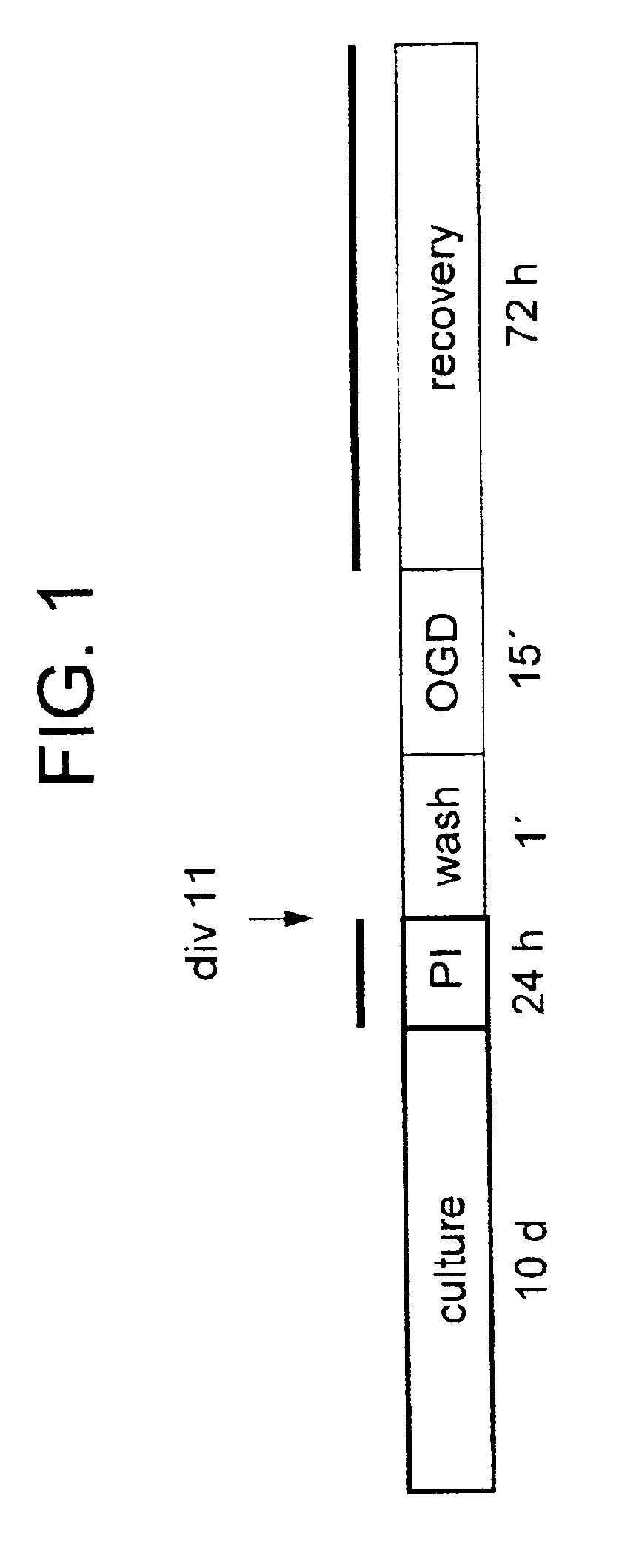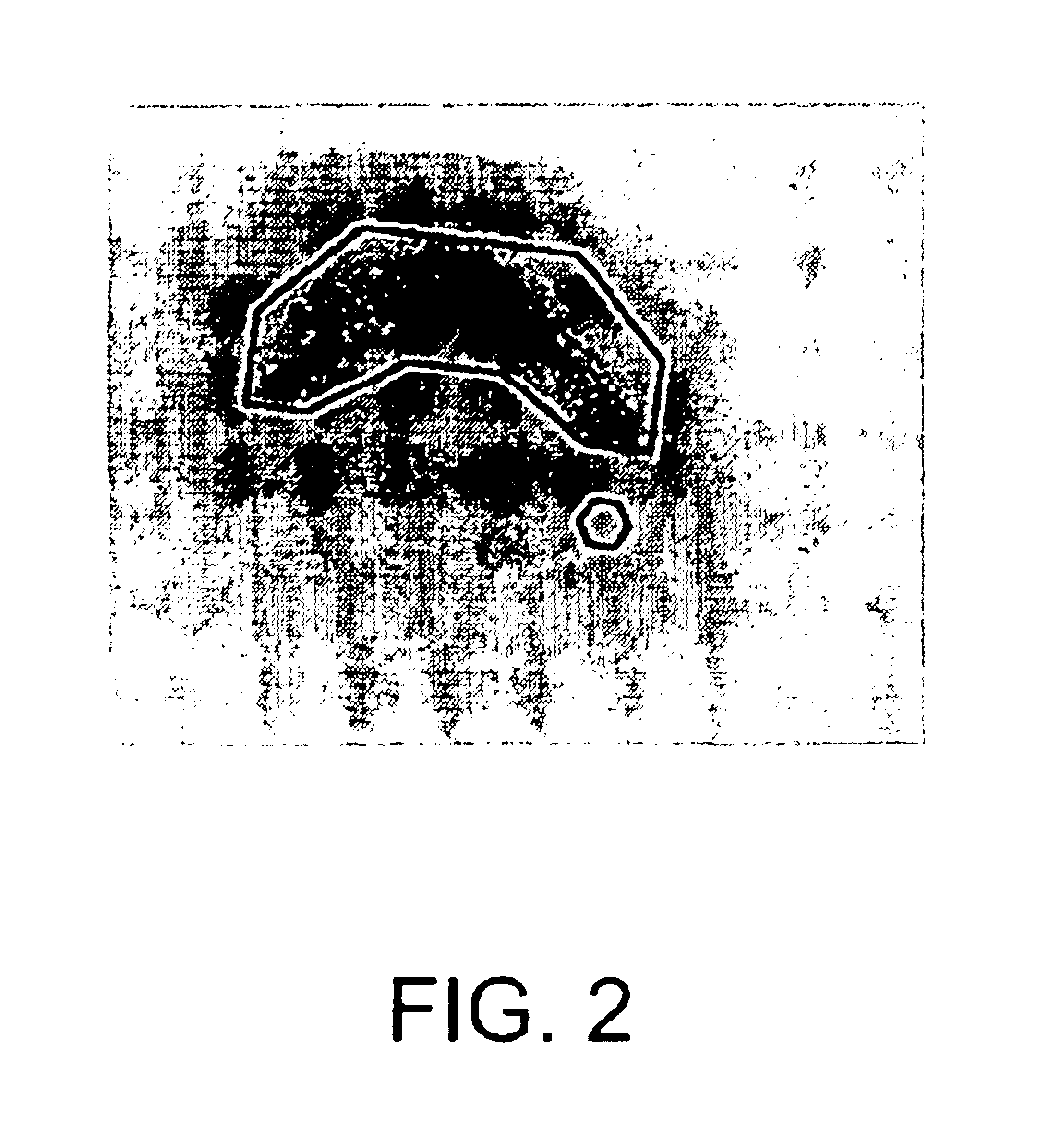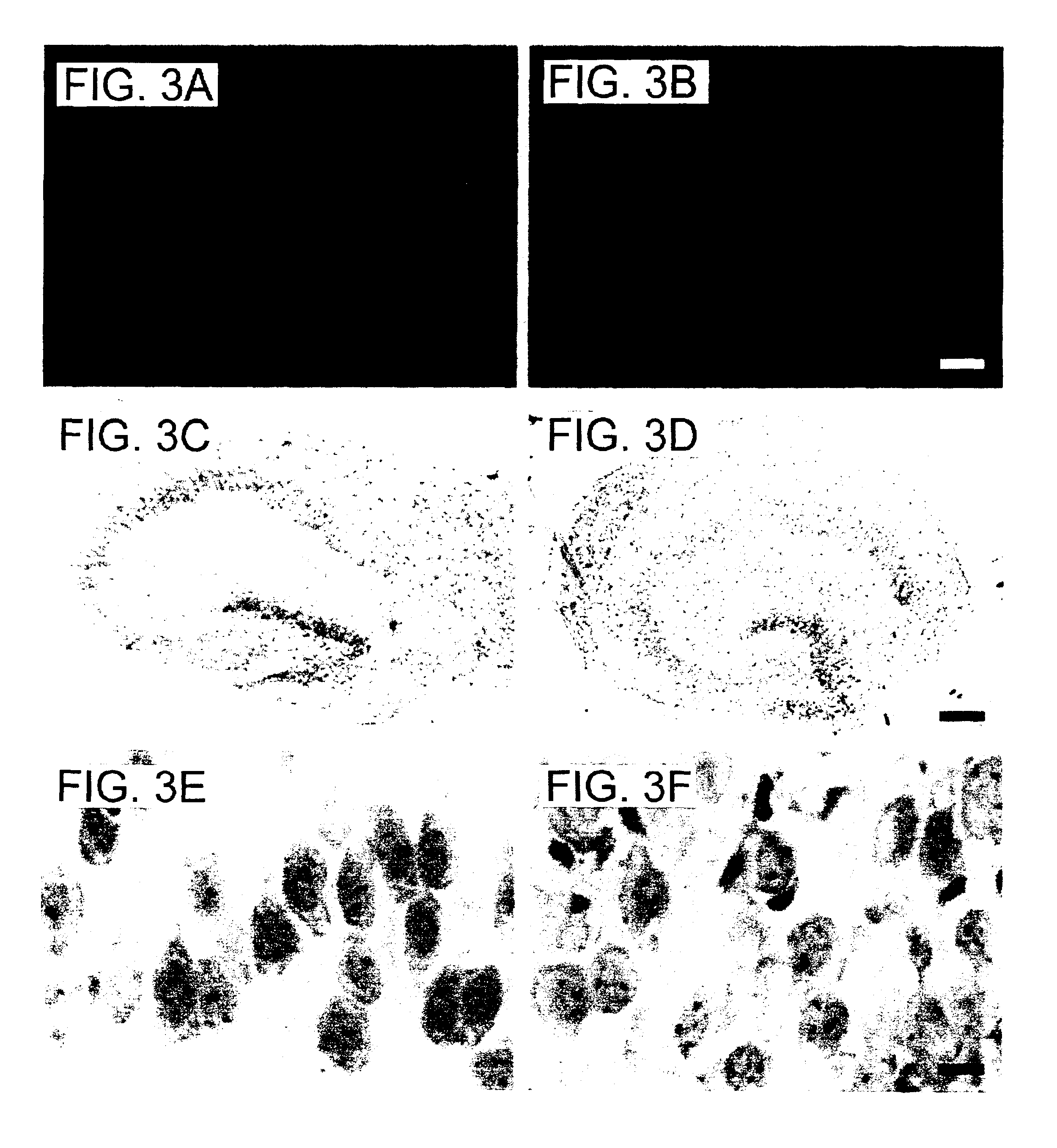In vitro ischemia model
- Summary
- Abstract
- Description
- Claims
- Application Information
AI Technical Summary
Benefits of technology
Problems solved by technology
Method used
Image
Examples
example 1
[0100]Materials and Methods
[0101]Preparation and maintenance of organotypic hippocampal tissue cultures. All animal experiments were approved by the Malmoe / Lund ethical committee on animal experiments. Organotypic hippocampal cultures were prepared according to Stoppini et al. (1991) J Neurosci Methods 37:173-182 with some modifications. Brains of 6-day-old Balb / c mice were removed and gently immersed into ice-cold dissection medium containing HBSS (Hank's balanced salt solution) with 20 mM HEPES, 100 units Penicillin-Streptomycin / ml and 41.5 mM D-glucose. Hippocampi were dissected out on ice and cut into 250 μm thick transverse sections using a Mcllwain Tissue Chopper. Cultures with even margins and clear, uniform and well defined pyramidal cell layers were selected and plated onto Millicell culture inserts (0.4 μm Millicell-CM, 12 mm in diameter, Millipore), one culture per insert. Sections from the caudal and most frontal parts of the hippocampus were discarded. Cultures were mai...
PUM
| Property | Measurement | Unit |
|---|---|---|
| Molar density | aaaaa | aaaaa |
| Molar density | aaaaa | aaaaa |
| Molar density | aaaaa | aaaaa |
Abstract
Description
Claims
Application Information
 Login to View More
Login to View More - R&D
- Intellectual Property
- Life Sciences
- Materials
- Tech Scout
- Unparalleled Data Quality
- Higher Quality Content
- 60% Fewer Hallucinations
Browse by: Latest US Patents, China's latest patents, Technical Efficacy Thesaurus, Application Domain, Technology Topic, Popular Technical Reports.
© 2025 PatSnap. All rights reserved.Legal|Privacy policy|Modern Slavery Act Transparency Statement|Sitemap|About US| Contact US: help@patsnap.com



